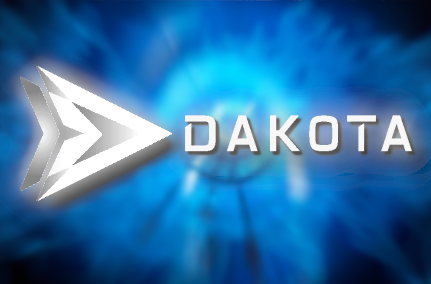Version 6.19 - Poisonous Pipeline (2023/11)

Version 6.19 of the Dakota GUI contains several exciting new features, including the ability to selectively restart individual Dakota evaluations.
Restart Capabilities
The Dakota GUI now features a new wizard called the “New Lazy Driver Wizard.” The concept behind a lazy driver is to allow Dakota to “set and forget” its individual evaluations. A lazy driver performs no calculations of its own, but simply wraps itself around the actual analysis driver which performs all the work. With a lazy driver, once Dakota has spun up separate analysis driver processes for each evaluation, Dakota will exit early, returning NaN values in place of the final evaluations. At a later stage, the user is able to re-run Dakota, and, thanks to the logic built in to the lazy analysis driver, each previously calculated evaluation will be picked up without re-running the analysis driver calculations required to arrive at that value. The most beneficial use case for lazy analysis drivers is for evaluations that take an exceedingly long time to run. Lazy analysis drivers can also be used in conjunction with remote job submission, if remote high-performance computers must be used to complete the calculations. The Dakota GUI supports lazy analysis drivers written in Python, Bash, or IWF (Next-Gen Workflow) format.
In addition to the New Lazy Driver Wizard, the Dakota GUI is now equipped with a context menu that allows the user to re-run individual evaluations (but only for studies that use lazy drivers). Imagine a study during which 49 out of 50 evaluations returned successfuly, but 1 evaluation mysteriously failed. With the new “Re-Run” context menu option, the user can opt to individually re-run that single evaluation without disrupting the other previously calculated evaluation results.
Enhancements to the Dakota Visual Editor
The Dakota Visual Editor is now equipped with a context menu for adding, deleting, and re-organizing top-level blocks in a Dakota study. This was a key feature that was previously missing from the Visual Editor, and its absence would have prevented a Dakota user from remaining in the Visual Editor to perform all of their edits. Now, top-level blocks can be managed without switching contexts to either the classic text editor or the expandable tree in the Project Navigator.
All of the remaining methods have been added to the Dakota Visual Editor. We have performed extensive testing on each method editor, but please contact the Dakota development team if you observe any problematic behavior with any of the new method editors.
To support the breadth of Dakota methods now available in the Visual Editor, the method selection dropdown has been replaced with a Google-esque search bar that allows the user to partially type in the method name and get matching search results.
Enhancements to New Dakota Study Wizard
The final page of the New Dakota Study wizard (which allows for interface block configuration) has been significantly refactored. Most importantly, failure capture options are now configurable on this page of the wizard.
The New Dakota Study wizard now accepts the possibility of 0 responses as a valid finishing condition for the wizard.
The New Dakota Study wizard now opens the newly-created input file as soon as the wizard is closed.
New Next-Gen Workflow Nodes
New displayPlot node: This node will automatically open a stream of Chartreuse-generated plot data for display in the main editor area of the GUI. This node circumvents the need to use a “file” node to save the plot data and then an “openFile” node to open the saved plot.
New PlotInputGather node: This node allows you to iterate over a folder of completed evaluation results and gather the data for plotting. This node circumvents the need to use a Dakota-generated tabular data file and/or Dakota-generated HDF5 file. Note that this node presumes the evaluation data was generated using Next-Gen Workflow.
New LocalDispatchAndCollect node: This node works exactly like the DispatchAndCollect node, except that it is equipped to do “set-and-forget” analysis driver data collection without sending the data to a remote high-performance computer. This node is used in conjunction with the New Lazy Driver wizard if you opt to generated an NGW-based lazy driver.
Misc.
Additional miscellaneous enhancements have now been made to the DispatchAndCollect node in Next-Gen Workflow.
Bugfix: An open HDF5 file is now automatically closed when the tree view is collapsed in the Project Navigator. Previously, dangling “open” files were causing problems if the Dakota GUI user wished to later delete the HDF5 file.

